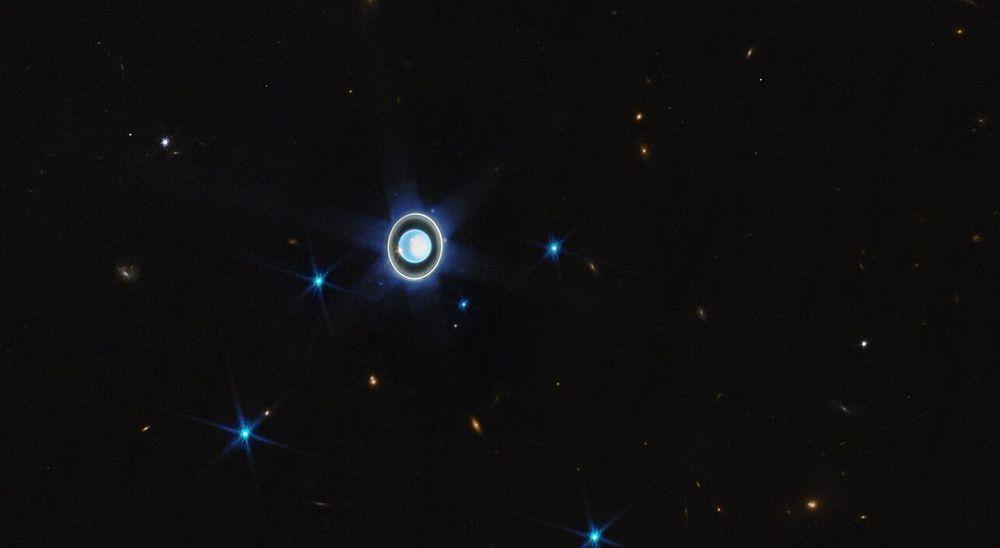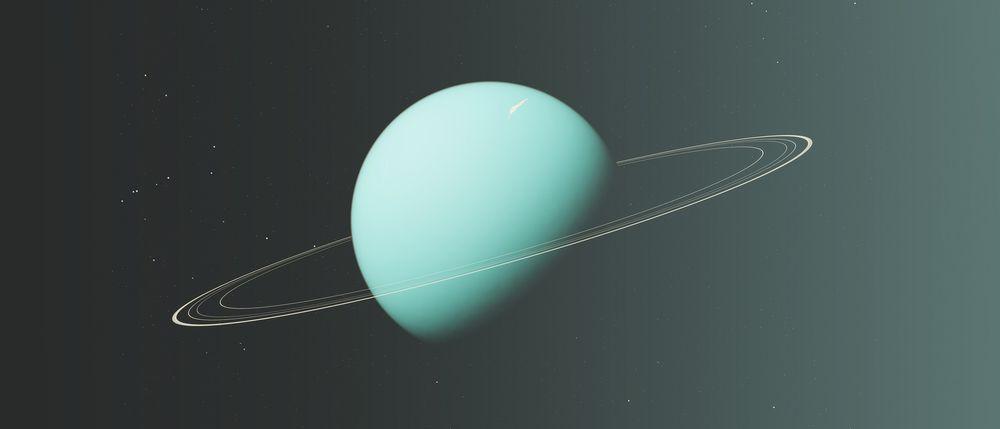Long ago, Uranus suffered a harsh cosmic impact that caused a tilt in its position. Some scientists believed, until now, that the planet’s rings could have formed as a result of that impact. But a new series of simulations have discovered something that, until now, we did not know.
Professor Stephen Kane, from the University of California, has taken charge of this study with the intention of clarifying something that has been of interest to him for decades. He had always wondered what the mystery was hidden behind the rings, so, as soon as he had the opportunity, he set to work to prove it.
The secret of the moons of Uranus
Although the rings could have been remnants of the impact produced in the past, a theory that, to say the least, was very coherent, Kane says in his research that he can say that it is unlikely. The reason for this is that simulations have shown that, if they had that origin, the rings would not have remained on Uranus as long as they have been on the planet. With the help of astronomer Zhexing Li, who has collaborated with him on the study, he has discovered that the reason for the existence and presence of the rings is found in something very different: the moons that the planet has.

This was another of the ideas I had as an explanation, so what they have done in the study, has been to carry out simulations between the five moons of Uranus and the way in which they interact with the rings. Thus they have discovered that it is these moons that have a greater impact on the rings, especially at a series of very specific moments. And what is most critical and surprising is knowing another of the study’s conclusions: the rings of Uranus lose mass due to the action of the moons themselves. Could there be a risk that these rings end up disappearing?
In 2040 we will explore Uranus
The information obtained in these simulations will greatly help humanity’s plans for the exploration of Uranus. Although definitive plans have yet to be finalized, the idea that is on the table is that, in the mid-2030s, an orbiter will be launched towards the planet. Exploring it and discovering more about it is marked as one of the main priorities of space agencies, so it is very likely that in the coming decades many of its mysteries will be revealed. If the orbiter launches in the 1930s, it is expected to reach Uranus in the next decade and then be able to begin exploring the planet. Surely, before that, Hollywood production companies will soon produce science fiction series about it, so get ready for Uranus to be talked about everywhere.
At that time, the simulations made by Stephen Kane and his team will be put to the test, who have revealed that the five moons of the planet, known by the names of Oberon, Titania, Umbriel, Ariel and Miranda, act with their orbital resonances on the rings. When they do so, the amount of dust and matter that makes up the rings is directly affected and a loss of mass occurs. Due to this, the size of the rings is currently smaller than what they were when they were formed. But it never completely disappears because, at the same time, there is some method by which they recover. Although the study does not fully specify how the dust recovery is generated, it is said that one of the main reasons is the impacts that occur on the moons of Uranus. Even if they are small, insignificant impacts, they raise some amount of dust that is thrown towards the rings.
What is also explained is that the orbits of the moons of Uranus shift, which is why they have had different orbital resonances on the rings. Therefore, it could be that the old position of the moons caused a greater loss of mass and that, in the current one, it remains more stable. In any case, it is something that is still open to study and on which they will continue researching. Kane is a specialist in the field who has previously also investigated Jupiter’s rings. His specialization may put him in the first position of reference for future work done on Uranus.

If all goes well, as we said, the future will provide us with a lot of knowledge about Uranus. Until now, humanity’s approach to the planet has been very limited. In NASA’s Voyager 2 mission there was some contact at a reasonable distance, but beyond that it is a planet that continues to be among astronomers’ main desires for analysis.













